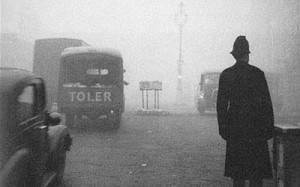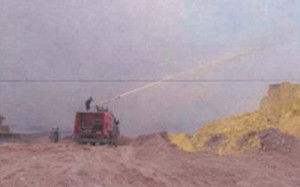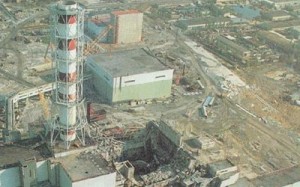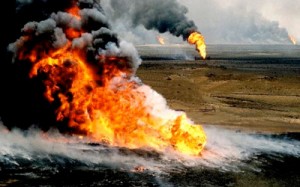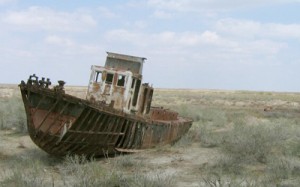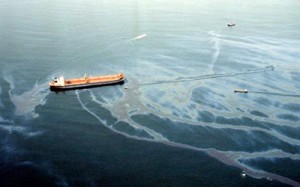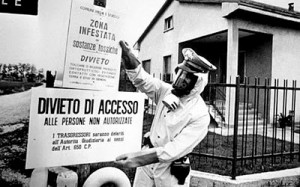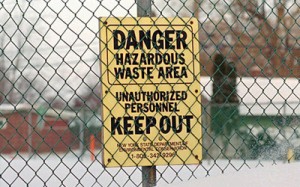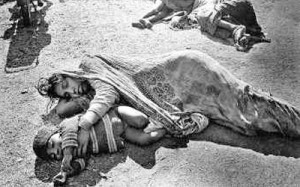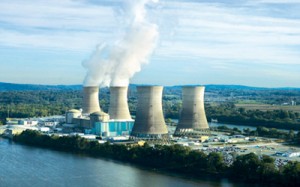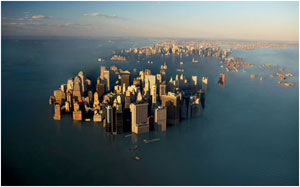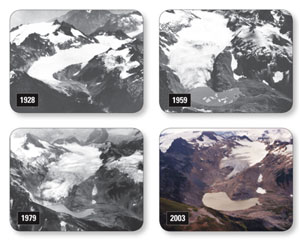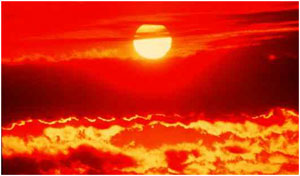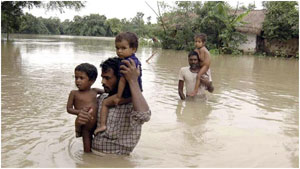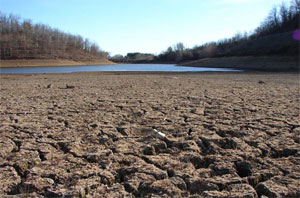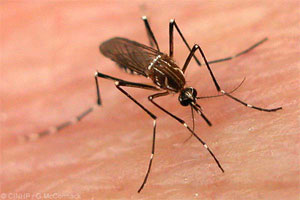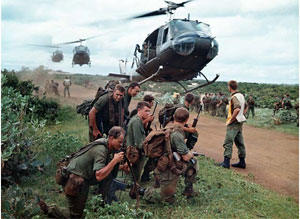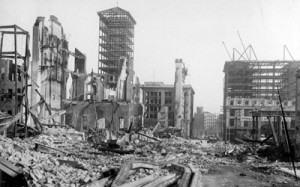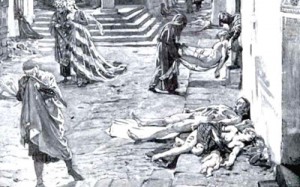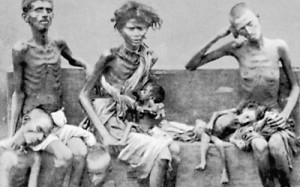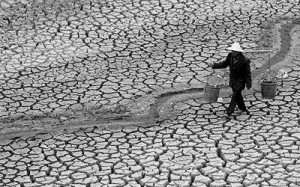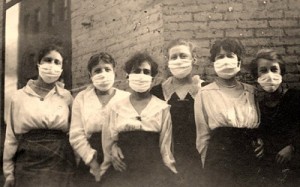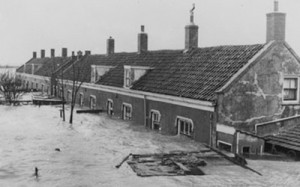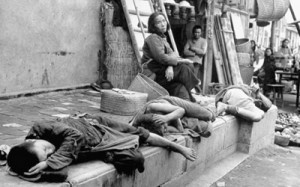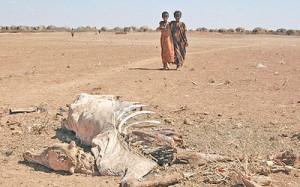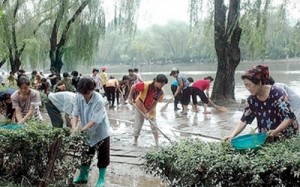Challenges to effective OHS consultation on large civil construction projects
Symposium 19. Author: Phil Wadick; Organisation: PhD Student, Monash University, Australia
Introduction
In this paper I discuss the challenges to effective OHS consultation and, thereby, effective management of OHS on large civil construction projects. The information presented as evidence in this discussion was gathered from workers (2 managers and 14 employee tradespersons and/or laborers) who attended 2 different 4-day OHS consultation training course for members of OHS committees. The informants were from 4 different OHS committees, each committee representing the workers from a different site – 2 road building, one bridge, and one large civil works building project. About 400 workers (almost 100% male) were employed across the 4 sites.
Background information
The construction industry is a dangerous industry with many workplace injuries and diseases. Site life is dirty, dusty, noisy, busy, smelly, precarious, and changeable. People use tools, drive machines, work at heights, work below ground, dig, cut, push, pull, lift, grind and so on. It is a very bodily activity, and the labouring body wears out. Construction projects are usually won by tender and therefore have cost and time pressures inbuilt. It is a male dominated industry with a masculine workplace culture of toughness and a ‘can do’ attitude, where risk taking has been traditionally demanded and valued. Many enter the industry with low education levels and poor literacy skills - it is one of the last places that semi literate people can excel because success is based on doing, and not reading, writing, or even talking about doing. Each trade is used to the dangers of their work, and know the health and safety outcomes they will suffer as a result. This ‘grand narrative’ style of thinking spurns questions and phrases such as ‘What can you do? It’s always been like this. What’s the use of complaining, no one listens?’ Eventually, most construction workers leave their job with broken, deformed and/or sick bodies. A sad story really, that is rendered possible because many of these workers perceive they have little other choice, and besides, they receive good pay, enjoy a sense of belonging and good camaraderie, and their self esteem is buoyed by their skill.
OHS legislation now says that employers and subcontractors must provide a safe workplace; the culture that accepts (begrudgingly) risks and ill health and other damage to the body as ‘normal’ is no longer acceptable. As well as this duty of care, employers must consult with workers about how to improve their safety, and the mechanism for this on large construction projects is mainly the OHS committee. Employees from each workgroup, such as steelfixers, formworkers, plant operators, concretors, and so on are to be elected to represent the OHS concerns of their team through the committee. Being an effective member of the committee requires fairly high levels of literacy, assertiveness, the ability to speak in public and the skills to consistently, confidently and emphatically present one’s point of view to a not always welcoming and receptive audience. Compounding this is the fact that most of the OHS reps in this study did not volunteer to go on the committee, nor were they elected by their workgroup, but were almost coerced by management pressure: ‘We have to have someone from your group on the committee; no one wants to do it, so why don’t you? You’d be good at it!’ And their reply is something like: ‘Well, I guess I’ll give it a go’. Will these people learn enough knowledge, skills and attitudes in a 4-day course? The managers already have these skills and they are already in a position of power. Managers are at home in the world of committees, the world of paperwork, the world of talking, bargaining and funding. On the other hand, that world is not the world of the laborer or tradesman, who are constituted by a long history of struggle and disempowerment.
Some examples
In this section I give examples from my focus groups, using the words and stories of the participants to demonstrate the complexities involved in turning construction workers into OHS committee members, especially when the culture and structure of the industry does not change to facilitate the process.
Example 1.
A machine operator on a large construction site was elected by his team to represent them on the OHS committee. He reluctantly accepted – he believes in the value of a safe workplace because of several brushes with serious workplace injuries (both to him and others). He is a shy person who does not easily speak up in formal public gatherings, such as tool box talks (team safety meetings) facilitated by ‘the boss’. However, his new role invites him to speak up; he wants to speak up; he learned and practised speaking up in a safe training environment, but he struggles with speaking up at work. According to him, it’s not so much his shyness that is the barrier, but rather the teasing from his team, who (jokingly – but it still hurts and threatens to make him an outsider) call him a suck up and accuse him of colluding with the boss. They taunt him that he now gets time off work when he is out of his machine and talking. He now must see himself as verbal, as a talker, a communicator, a negotiator, an active listener and as a mediator between his team and the powerful management hierarchies. It is difficult for him to maintain his new identity of the OHS rep and still be accepted as one of the team. His new role appears to gives him access to more power and control: he is invited to have an opinion, he is invited to try to influence decision making, and he trembles with the tension created by this potential.
Example 2
Another construction worker tells the researcher that he sees no hope of addressing his safety concerns because he is a ‘steelfixer’, and steel fixers get a bad back; and he has terrible RSI in his right hand and arm from repetitive use of his wire twisting pliers. He is resigned to his fate with a what can you do?attitude. He feels powerless to change as there is no obvious career path for the skilled, barely literate steel fixer. He gains his personal power from doing a good job and having fun with my mates. However, this person too has accepted nomination as his team’s OHS rep on the safety committee. Not only does he feel powerless to stop his work practices and tools from damaging his body, he now must use the new (to him) technology of the written word. Yet, when asked if he would help a team mate fill out a hazard report form, he said How could I; I never have any pen and paper! This new technology of the contemporary construction site is not his technology. His engagement with his new role may be as a fringe dweller, a peripheral participant in which he self marginalises.
Example 3
New members of the OHS committee leave the course full of enthusiasm and new ideas to implement in their workplace. How they are met at a personal level at their workplace will influence how successful they are at maintaining their enthusiasm and influencing change that results in safer workplaces. For example, some of the participants in one course were having difficulty getting the full support of management for their opinions. Part of their function is to conduct safety inspections of the workplace, and to report the results to an OHS committee meeting. The first inspection these newly trained reps conducted was subtly discouraged by middle management (the foreman), questioning the amount of time the workers would need to complete the task. Then, at the last minute, the same foreman said he was too busy to participate, and became passively uncooperative. They learned that, in their immediate boss’s opinion, their role was not valued. However, their commitment sustained them over this first hurdle, and they persevered to conduct the inspection. Half way through, they encountered a senior manager, who was very supportive and stopped what he was doing to accompany them for the rest of the inspection. Now they were in a dilemma – their immediate boss was unsupportive and the big boss was supportive: how do they negotiate a safe path between the contradictory discourses? Even though the senior manager has more authority, their foreman has more direct power over them, and he can make their life a misery. They admit to me that if they want to ‘survive’ they must tread very carefully. They got such a surprise that being an OHS rep was such a political process.
Example 4
There were many such stories of (both passive and active) resistance from management. A formworker who now feels empowered to request proper scaffolding is told by the boss we’ll look into it, with two weeks going by with still no answer. The workers become suspicious and powerful rumours circulate through the grapevine encounters that the bosses get big bonuses if they can finish ahead of schedule and under budget. The workers feel that their bodies are being put at risk to benefit an already privileged group who are not exposed to the same risks as them. The company makes a profit at the expense of the degraded bodies of the workers. And this degradation is accelerated through safety shortcuts. The OHS reps wonder how they can rectify this situation when they are denied any real authority or power. The OHS reps are caught now between their new found OHS knowledge and skills, the official discourse of company safety policy, management lack of support and fellow worker demands of both offering and withdrawing emotional support.
Example 5
The formworkers and steel workers lament that they are forced to walk over rocky and uneven surfaces and endure ankle and/or knee injuries to save on the cost of smoothing it out with truck loads of fine gravel. There are symbols of power involved – the bosses have smooth ground and air conditioned offices, the workers do not. The workers know their place and accept (and expect) the physical manifestations of these power imbalances that treat them like they are less important, and they do not clamour for improvements. These symbols can be thought of as techniques of domination and a subtle message that management does not value the workers’ opinion. If your opinion is ignored often enough, you will stop giving it.
Example 6
The management of OHS can be seen as a technology of power where employees perceive that they are being held responsible for their own safety. So often I hear workers complain that management is transferring liability to them by getting them to sign off on inductions, safe work method statements (swms), and other forms of written knowledge. The workers often sign without actually understanding what they are signing. The extra paperwork is a symbol of power and it is being used as a form of control. In the end, the worker has signed many pieces of paper to say they know and understand something. The knowledge that they have done this erodes their confidence to speak out against practices that hurt the body. The paperwork takes on power and control. And, like in Foucault’s exploration of Bentham’s Panoptikon, the workers become the guards and enforcers of this power as no one is permitted into their own sphere of control until they have signed the bits of paper. They are doing all this not because they believe in it, but because they and their bosses are under the gaze of the Other, and the Other is WorkCover (the statutory authority administering OHS). Getting people to sign helps them demonstrate to the Other that they have complied with legislation and is perceived to reduce their liability. However, These documents are perceived as doing very little to improve safety.
Example 7
In this essay I am trying to describe the discord emerging in ohs consultation, especially in the construction industry. On the face of it, employers do set up ohs committees, and the ohs reps do undertake the compulsory training. However, the effectiveness of this system is undermined by several factors. OHS consultation is designed to empower workers, but it often does not because workers are often disempowered through the management practices on site. Many trade and labouring jobs on site offer limited decision making opportunities; e.g. engineers decide on the type and position of the steel that is ‘placed’ by the steel fixers. That is, in general, the trades/labourers do the work whit management make the decisions that affects what work they do. It is very difficult to become a creative and articulate problem solver and risk manager when you are usually sonly expected to do as you are told.
Example 8
OHS reps often feel penalized for diligently carrying out their role, which reduces their motivation. E.g. newly elected committee reps conducted a site safety inspection and came up with a score of 68% compliance (using the in-house scoring mechanism). The supervisor was horrified because his KPI’s require an average of > or = 85%, which they believe is only possible by being blind to some things. They got a roasting from the boss, who accused them of being troublemakers. They believed that he compromised their safety to look good to the auditors. They became discouraged and lost belief in the system. Imagine the difference if their score was greeted with a terrific, and thank you!Response, and they were seriously invited to suggest improvements that were implemented.
Recommendations and Implications
It is not simple or easy to change this situation because it is changing the tide of history. I offer the following suggestions that, if implemented, will help.
1. Train the ohs representatives in the skills of consultation. This means that the trainer needs to use a consultative approach throughout the training. The training model needs to mirror the consultation process. The trainer needs to create a safe place and space where the participants can share ideas, beliefs and attitudes with others to facilitate the social construction of meaning. The interaction among participants will simulate the workplace if they are challenged and forced to justify their suggestions and allowed to practise listening, speaking, problem solving and root cause analysis, based on the real issues of their workplace.
2. A challenge for the trainer is to teach the participants to use a different language to describe ohs problems at work so as to open up possibilities for improvement. For example, the rhetorical question ‘What can you do?’implies that nothing can be done because the industry is inherently dangerous and there is no other way to do the job. The workers need to learn to reframe this into a statement such as ‘Yes, it has been a dangerous industry, but, with careful consideration, we can make it safer’. This positive attitude will give them the hope and impetus to creatively consider ways of controlling hazards at the source
3. Site supervisors need to become mentors for the emerging ohs representatives – they can nurture the skills needed to speak up, to fill out and contribute to paperwork such as reports, incident investigations, agendas, minutes and site safety inspections. Consequently, supervisors need to lead by example – by paying at least as much attention to ohs and consultation as they do to production and numbers.
4. Best practice workplaces may be able to help employees develop skills in literacy, problem solving, communication, decision making, reflective practice and public speaking. This could be done on “wet days” when workers often pass the time of waiting by playing cards or other non productive activities.
5. Site inductions may be improved by using a questioning approach to the new worker; that is, get them involved and talking. Before boring them with all the things they have heard before, ask them what they think the hazards are on this site, and how they are going to control the hazards and risks they face. Get them to ask you some questions. Make the induction a discussion, and during this discussion, demonstrate your sincerity about workplace health and safety. Ask them if they know about OHS consultation, and what they know about it. Introduce them to the site OHS representative. Let them know that you and/or the site rep want to know any concerns they have for their own or others’ health and safety. If they do report something, stop what you are doing and go and have a look, be interested, and ask them for ideas on what can be done to fix it. Let them report things verbally, and you fill out the incident/hazard report for them. Make sure you take all of these reports seriously; if you don’t, they won’t
Conclusion
Management of ohs on construction sites is more effective when workers contribute to the making of ohs decisions through an efficient consultation process. Employers often pay lip service to these legal requirements rather than make real efforts. Construction employees are not used to being a core part of the decision making process, and often do not have the necessary knowledge, attitudes and skills. It will be very difficult to make construction sites safe is we continue to marginalise workers by not training and mentoring them adequately to be able to speak up to become part of the real decision making process.




 Millions of people in Asia and Africa may face the threat of starvation by 2050 as a result of extreme temperature globally, scientists warn.
Millions of people in Asia and Africa may face the threat of starvation by 2050 as a result of extreme temperature globally, scientists warn. 